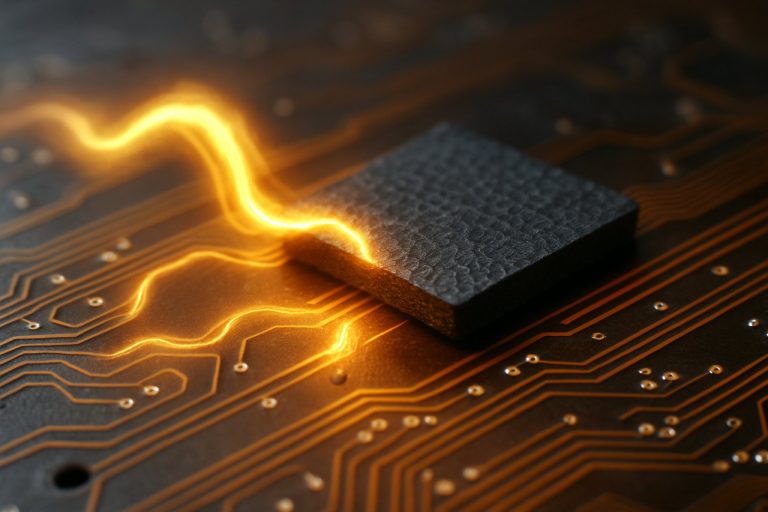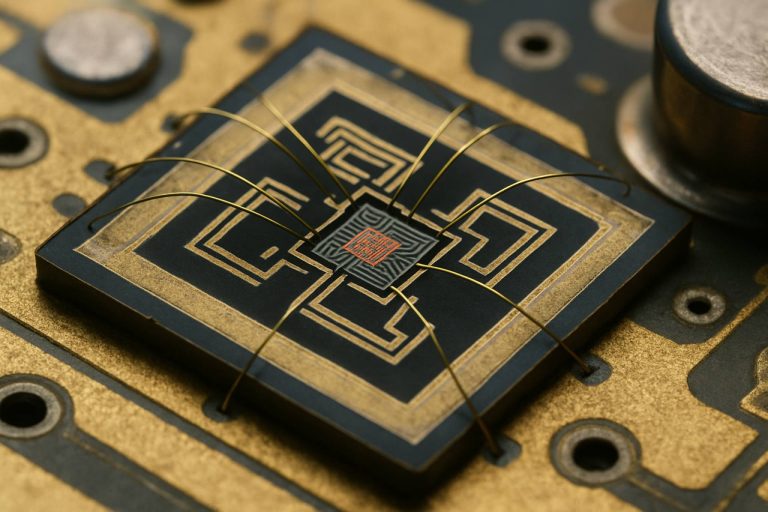
How Xenon Lighting Technologies Are Shaping the Future of Illumination—From Automotive Headlights to High-Performance Industrial Applications, Discover the Science and Innovation Powering the Brightest Lights on the Market.
- Introduction: The Rise of Xenon Lighting Technologies
- How Xenon Lights Work: Science Behind the Glow
- Key Advantages Over Traditional Lighting Solutions
- Major Applications: Automotive, Industrial, and Beyond
- Recent Innovations and Breakthroughs in Xenon Lighting
- Environmental Impact and Energy Efficiency
- Market Trends and Future Outlook
- Challenges and Limitations Facing Xenon Technologies
- Comparative Analysis: Xenon vs. LED and Halogen Lighting
- Conclusion: The Road Ahead for Xenon Lighting Technologies
- Sources & References
Introduction: The Rise of Xenon Lighting Technologies
Xenon lighting technologies have emerged as a transformative force in the field of illumination, offering significant advancements over traditional lighting systems. At their core, xenon lights utilize xenon gas within a sealed bulb, which, when electrically stimulated, emits a bright, white light closely resembling natural daylight. This technology was first introduced in the automotive industry in the early 1990s, rapidly gaining popularity due to its superior brightness, energy efficiency, and extended lifespan compared to halogen lamps. The adoption of xenon lighting has since expanded beyond automotive applications, finding use in cinema projection, architectural lighting, and specialized scientific equipment.
The rise of xenon lighting technologies can be attributed to several key factors. Firstly, xenon lamps produce a high-intensity, broad-spectrum light that enhances visibility and color rendering, making them ideal for environments where clarity and precision are paramount. Secondly, their energy efficiency and durability contribute to reduced operational costs and environmental impact, aligning with global trends toward sustainable technology. Additionally, ongoing innovations in ballast design and lamp construction have improved the reliability and versatility of xenon systems, enabling their integration into a wider array of applications.
As industries continue to demand higher performance and sustainability from lighting solutions, xenon technologies are poised to play a pivotal role in shaping the future of illumination. For further information on the development and applications of xenon lighting, refer to resources from the OSRAM and the Philips.
How Xenon Lights Work: Science Behind the Glow
Xenon lighting technologies harness the unique properties of xenon gas to produce intense, bright light through a process known as gas discharge. At the core of a xenon lamp is a sealed quartz or glass tube filled with xenon gas at high pressure. When a high-voltage electrical current is applied across electrodes at either end of the tube, it ionizes the xenon gas, creating a plasma. This plasma state allows electrons to move freely, colliding with xenon atoms and exciting them to higher energy states. As these atoms return to their ground state, they emit photons, resulting in a bright, white-blue light that closely mimics natural daylight.
Unlike traditional incandescent bulbs, which rely on heating a filament, xenon lamps generate light through this electrical excitation, making them more efficient and longer-lasting. The high color temperature and luminous efficacy of xenon lights make them particularly suitable for automotive headlamps, cinema projectors, and specialized scientific equipment. The rapid ignition and ability to reach full brightness almost instantly are additional advantages over other gas-discharge lamps, such as those using mercury vapor or halogen gases. Furthermore, xenon’s inert nature ensures minimal chemical degradation of lamp components, contributing to the longevity and reliability of these lighting systems OSRAM Philips.
Key Advantages Over Traditional Lighting Solutions
Xenon lighting technologies offer several key advantages over traditional lighting solutions such as halogen and incandescent lamps, making them a preferred choice in various applications, particularly in automotive and high-intensity lighting. One of the primary benefits is their superior luminous efficacy; xenon lamps produce a brighter, whiter light that closely mimics natural daylight, enhancing visibility and reducing eye strain for drivers and users in other settings. This improved illumination is especially valuable in automotive headlamps, where it contributes to increased road safety and better object recognition at night or in adverse weather conditions (National Highway Traffic Safety Administration).
Another significant advantage is energy efficiency. Xenon lamps require less electrical power to generate the same or greater levels of brightness compared to traditional halogen bulbs, resulting in lower energy consumption and reduced heat output. This efficiency not only extends the lifespan of the lighting system but also contributes to lower operational costs and environmental impact (U.S. Department of Energy).
Additionally, xenon lighting technologies are known for their longevity. The absence of a filament, which is prone to wear and breakage in conventional bulbs, allows xenon lamps to maintain consistent performance over a longer period. This durability reduces maintenance frequency and replacement costs, making them a cost-effective solution for both consumers and industries (OSRAM).
Major Applications: Automotive, Industrial, and Beyond
Xenon lighting technologies have found widespread adoption across a diverse range of applications, with the automotive and industrial sectors being particularly prominent. In the automotive industry, xenon high-intensity discharge (HID) lamps are favored for their superior brightness, color temperature, and energy efficiency compared to traditional halogen bulbs. These attributes enhance nighttime visibility and driver safety, leading to their integration in headlamps, fog lights, and adaptive lighting systems in premium and mid-range vehicles. Regulatory standards in regions such as the European Union and North America have further driven the adoption of xenon lighting in automotive design, as documented by the United Nations Economic Commission for Europe.
Beyond automotive uses, xenon lighting technologies are integral to various industrial applications. Xenon arc lamps are widely employed in the film and projection industry due to their ability to produce a continuous spectrum of light closely resembling natural daylight, which is essential for accurate color rendering. In scientific and medical fields, xenon lamps serve as light sources in spectroscopy, microscopy, and phototherapy equipment, owing to their high intensity and stable output. The OSRAM group, a leading manufacturer, highlights the use of xenon lamps in solar simulation, material testing, and water purification systems, where their ultraviolet output is particularly valuable.
Emerging applications extend to aerospace, where xenon lamps are used in strobe and landing lights, and in specialized environments such as underwater exploration and stage lighting. The versatility and performance of xenon lighting technologies continue to drive innovation and expansion into new fields, as noted by the Philips lighting division.
Recent Innovations and Breakthroughs in Xenon Lighting
Recent years have witnessed significant innovations in xenon lighting technologies, driven by demands for higher efficiency, improved color rendering, and longer operational lifespans. One notable breakthrough is the development of advanced high-intensity discharge (HID) xenon lamps with optimized electrode materials and refined gas mixtures, resulting in enhanced luminous efficacy and reduced energy consumption. These improvements have made xenon lighting more competitive with emerging LED and laser-based systems, particularly in applications requiring intense, high-quality illumination such as automotive headlights and cinema projection.
Another area of advancement is the integration of digital control systems, enabling dynamic adjustment of light output and color temperature in real time. This has been particularly impactful in adaptive automotive lighting, where xenon headlamps can now automatically adjust their beam patterns based on driving conditions, improving both safety and energy efficiency. Additionally, research into miniaturized xenon flash lamps has expanded their use in scientific instrumentation and medical devices, where precise, high-intensity pulses are required.
Environmental considerations have also spurred innovation, with manufacturers developing xenon lamps that use less hazardous materials and are more easily recyclable. Furthermore, hybrid systems combining xenon and LED technologies are being explored to leverage the strengths of both light sources, offering superior performance in specialized applications. These ongoing advancements underscore the adaptability and continued relevance of xenon lighting in a rapidly evolving technological landscape, as highlighted by recent reports from the OSRAM and Philips.
Environmental Impact and Energy Efficiency
Xenon lighting technologies, widely used in automotive headlights, cinema projection, and specialized industrial applications, present a nuanced environmental profile. Compared to traditional incandescent bulbs, xenon lamps are more energy-efficient, converting a higher proportion of electrical energy into visible light and thus reducing overall power consumption. This efficiency translates into lower greenhouse gas emissions when xenon lighting replaces less efficient technologies, especially in large-scale or high-intensity applications U.S. Department of Energy.
However, the environmental impact of xenon lighting is not solely determined by operational efficiency. The production of xenon gas, a rare noble gas extracted from the atmosphere, is energy-intensive and costly, contributing to a higher embodied energy compared to more common lighting technologies. Additionally, while xenon lamps do not contain mercury—a significant advantage over some fluorescent lighting—they do require high-voltage operation and specialized disposal procedures due to the presence of pressurized gas and potentially hazardous materials in electrodes and lamp housings U.S. Environmental Protection Agency.
In terms of lifecycle, xenon lamps generally offer longer operational lifespans than halogen bulbs but are outperformed by modern LED technologies, which are both more energy-efficient and environmentally benign. As regulatory standards increasingly favor low-energy, low-toxicity lighting solutions, the market share of xenon lighting is expected to decline in favor of LEDs, which offer superior energy savings and reduced environmental impact International Energy Agency.
Market Trends and Future Outlook
The market for xenon lighting technologies is experiencing a dynamic shift, influenced by evolving automotive, cinema, and industrial applications. While xenon lamps have long been favored for their high-intensity discharge and superior color rendering, especially in automotive headlamps and digital projectors, the sector faces increasing competition from LED and laser-based alternatives. Despite this, xenon lighting maintains a strong presence in high-end and specialty markets due to its unmatched brightness and reliability in demanding environments.
Recent trends indicate a gradual decline in mass-market adoption, particularly in automotive lighting, as manufacturers transition to more energy-efficient and longer-lasting LED systems. However, xenon technology continues to be preferred in applications where intense, broad-spectrum light is essential, such as in scientific instrumentation, medical devices, and large-venue projection systems. The cinema industry, for example, still relies heavily on xenon arc lamps for digital projectors, although laser projection is gaining ground OSRAM.
Looking ahead, the future outlook for xenon lighting technologies is characterized by niche market resilience and incremental innovation. Manufacturers are focusing on improving lamp lifespans, reducing environmental impact, and enhancing performance to retain relevance in specialized sectors. The global xenon lamp market is projected to see modest growth, driven by demand in scientific, medical, and entertainment applications, even as mainstream markets pivot toward solid-state lighting MarketsandMarkets. Strategic partnerships and technological advancements will be key to sustaining xenon’s role in the evolving lighting landscape.
Challenges and Limitations Facing Xenon Technologies
Despite their widespread use in automotive headlights, cinema projection, and scientific instrumentation, xenon lighting technologies face several significant challenges and limitations. One of the primary concerns is energy efficiency. Xenon lamps, particularly high-intensity discharge (HID) types, tend to consume more power compared to modern alternatives like LEDs, resulting in higher operational costs and increased heat generation. This inefficiency can be a critical drawback in applications where energy conservation is paramount U.S. Department of Energy.
Another limitation is the relatively short lifespan of xenon lamps. While they outperform traditional halogen bulbs, xenon lamps generally have a shorter operational life than LEDs, leading to more frequent replacements and higher maintenance costs, especially in settings where continuous operation is required OSRAM. Additionally, xenon lamps require high-voltage ignition systems, which add complexity and cost to the overall lighting system.
Environmental and safety concerns also pose challenges. Xenon lamps contain pressurized gas and, in some cases, hazardous materials such as mercury, necessitating careful handling and disposal procedures to prevent environmental contamination and ensure user safety U.S. Environmental Protection Agency. Furthermore, the intense brightness of xenon lights can cause glare, potentially impacting road safety in automotive applications.
Finally, the global shift toward more sustainable and energy-efficient lighting solutions, such as LEDs and laser-based systems, is gradually reducing the demand for xenon technologies, challenging their long-term viability in many markets.
Comparative Analysis: Xenon vs. LED and Halogen Lighting
Xenon lighting technologies have long been favored in automotive and specialty lighting applications due to their high-intensity discharge (HID) characteristics, which produce a bright, white light closely resembling daylight. When compared to halogen and LED lighting, xenon lamps offer distinct advantages and limitations. Halogen bulbs, while inexpensive and easy to replace, emit a warmer, yellowish light and are less energy-efficient. Their average lifespan is significantly shorter, typically around 500 to 1,000 hours, compared to xenon’s 2,000 to 3,000 hours OSRAM.
LED lighting, on the other hand, has rapidly gained popularity due to its superior energy efficiency, compact size, and longevity—often exceeding 20,000 hours. LEDs also offer instant illumination and greater design flexibility. However, xenon lights still surpass LEDs in terms of luminous intensity and beam reach, making them preferable for high-performance headlamps and applications requiring maximum visibility Philips.
Despite their advantages, xenon systems are more complex, requiring ballasts for ignition and voltage regulation, which can increase installation and maintenance costs. Additionally, xenon bulbs contain trace amounts of mercury, raising environmental concerns not present with LEDs or halogens U.S. Environmental Protection Agency. In summary, while xenon lighting technologies offer superior brightness and color rendering, the choice between xenon, LED, and halogen depends on specific application requirements, cost considerations, and environmental impact.
Conclusion: The Road Ahead for Xenon Lighting Technologies
Xenon lighting technologies have played a pivotal role in automotive, cinema projection, and specialized industrial applications due to their high-intensity output and color rendering capabilities. However, the landscape is rapidly evolving as new lighting solutions, particularly LEDs and laser-based systems, gain traction for their superior energy efficiency, longevity, and design flexibility. Despite these advancements, xenon lamps continue to offer unique advantages in scenarios demanding intense, broad-spectrum illumination, such as in high-end projectors and certain scientific instruments.
Looking ahead, the future of xenon lighting will likely be characterized by niche specialization rather than widespread adoption. Ongoing research focuses on improving lamp efficiency, reducing environmental impact, and extending operational lifespans, which could help maintain relevance in select markets. Additionally, hybrid systems that combine xenon with emerging technologies may offer transitional solutions, leveraging the strengths of both approaches. Regulatory pressures regarding hazardous materials, such as mercury content, and the global push for sustainability will further shape the trajectory of xenon lighting.
Ultimately, while xenon lighting technologies may cede ground to newer alternatives in mainstream applications, their continued evolution and adaptation will ensure a role in specialized fields for years to come. Stakeholders in the lighting industry must remain agile, investing in innovation and sustainability to navigate the shifting landscape and harness the enduring benefits of xenon-based solutions OSRAM Philips.



